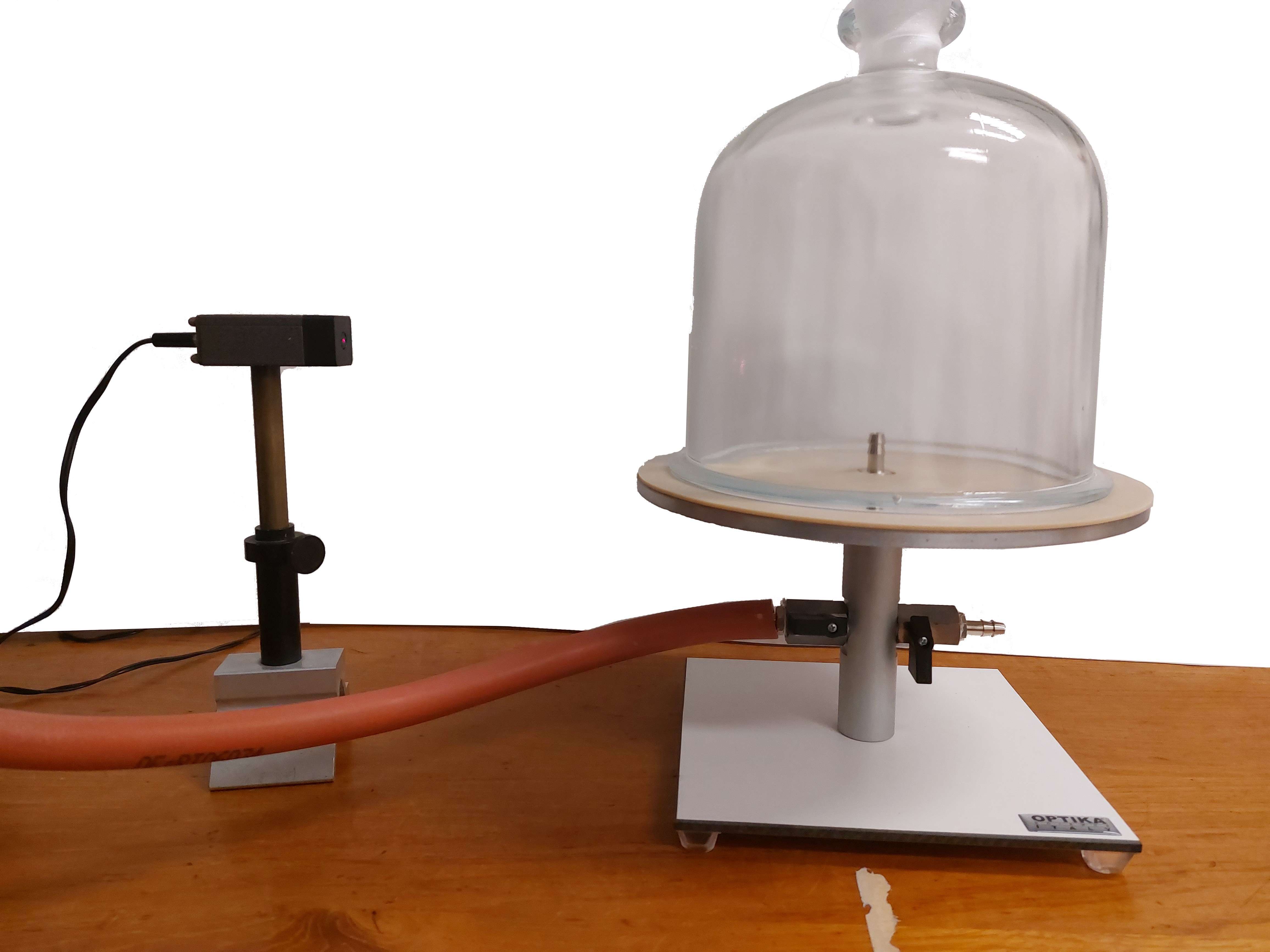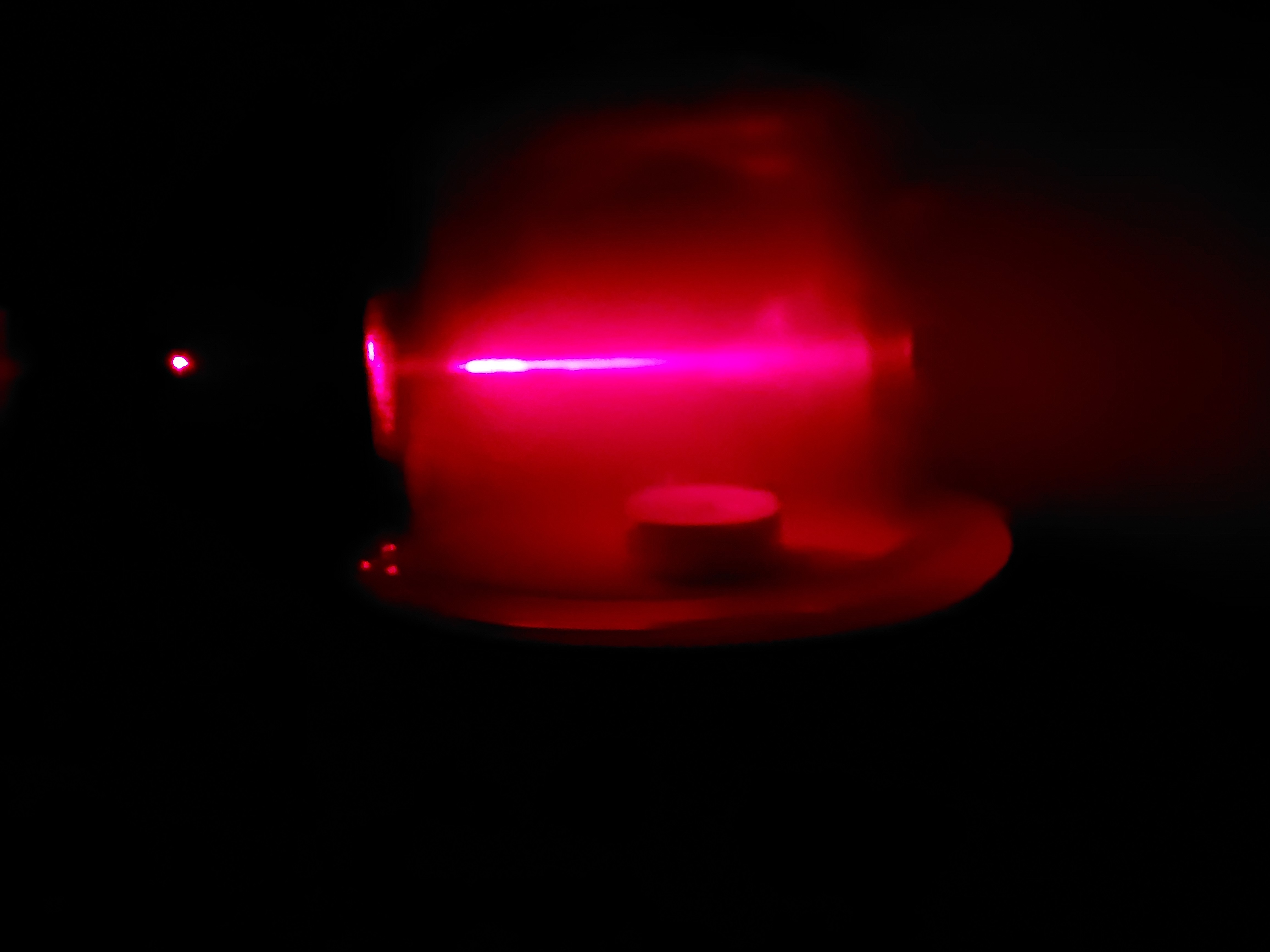15.1. Light in darkness#
| Author: | Freek Pols |
| Time: | 15-20 minutes |
| Age group: | 12 - 18 |
| Concepts: | Light, light matter interaction |
Introduction#
What is light? Why is it dark at night while there are so many stars? Why do we (not) see objects? These are relevant questions that we can ask ourselves. But these are also interesting questions from a physics perspective. This demo, adapted from Demircioglu and Cin [2019], lets students consider answers to these questions in an inquisitive way.
Equipment#
Laser
Vacuum pump & bell jar
Darkened room
Lightning matches
Candle
Preparation#
Light the candle and put it under the vacuum bell jar so that smoke is trapped beneath it. Make sure there is enough smoke! The smoke will make the laser beam visible, see Figure 15.1. Darken the classroom but leave the lights on.

Fig. 15.1 The setup consisting of a laser, a vacuum bell jar and a small candle for smoke.#
Procedure#
Start the demo with asking the broad question why it is dark at night even with so many stars? If there are countless stars, would the sky not be bright at night as well? Explain that the vacuum bell jar can be used as a model for the universe: there are hardly any particles in space. Moreover, we can regard the laser as a star.
Turn the laser on and ask students what they observe. Is the laser beam visible? Everywhere? Outside and inside the bell jar? Now, turn the lights off. What can we see now? Is the laser beam visible in and outside the bell jar? Is there any difference in light intensity? If so, what is a possible reason (hypothesis)? How can we test this hypothesis?

Fig. 15.2 The laser beam is well visible, but the entire bell jar is illuminated as well!#
Ask students to write down their observation when you turn on the vacuum pump. If the bell jar has been sufficiently vacuumed, you can turn off the pump and ask whether the laser beam is still visible in the jar. Is there still light anyway? Why do we see things, and how do we relate this demo, and what happens, with being dark at night?

Fig. 15.3 When the bell jar gets more and more vacuum, the light intensity of the laser beam is less until it is not visible at all anymore.#
Physics background#
To see objects, there needs to be a light-matter interaction. Because the universe is almost entirely empty (vacuum), there are hardly any interactions. The light that we see at night is directly coming from the stars. Many light beams ‘miss’ the earth and will never be observed. There are some exemptions of the light-matter interactions: The moon does not produce light itself but reflects the light coming from the sun.
Follow-up#
One can discuss the many fights in science fiction movies such as Star Wars. Fazers are being shot, resulting in a visible laser beam. What would you see on earth? And in space?
References#
Salih Demircioglu and Merve Oztas Cin. An argumentation-based demonstration experiment in teaching the light–matter interaction. Physics Education, 54(5):055010, 2019. doi:10.1088/1361-6552/ab2924.
